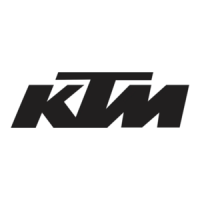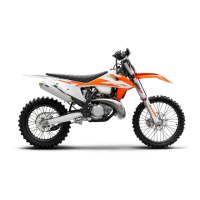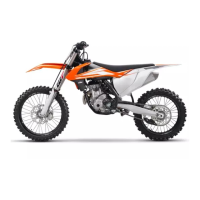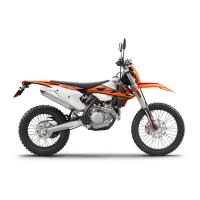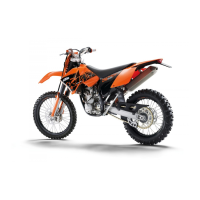
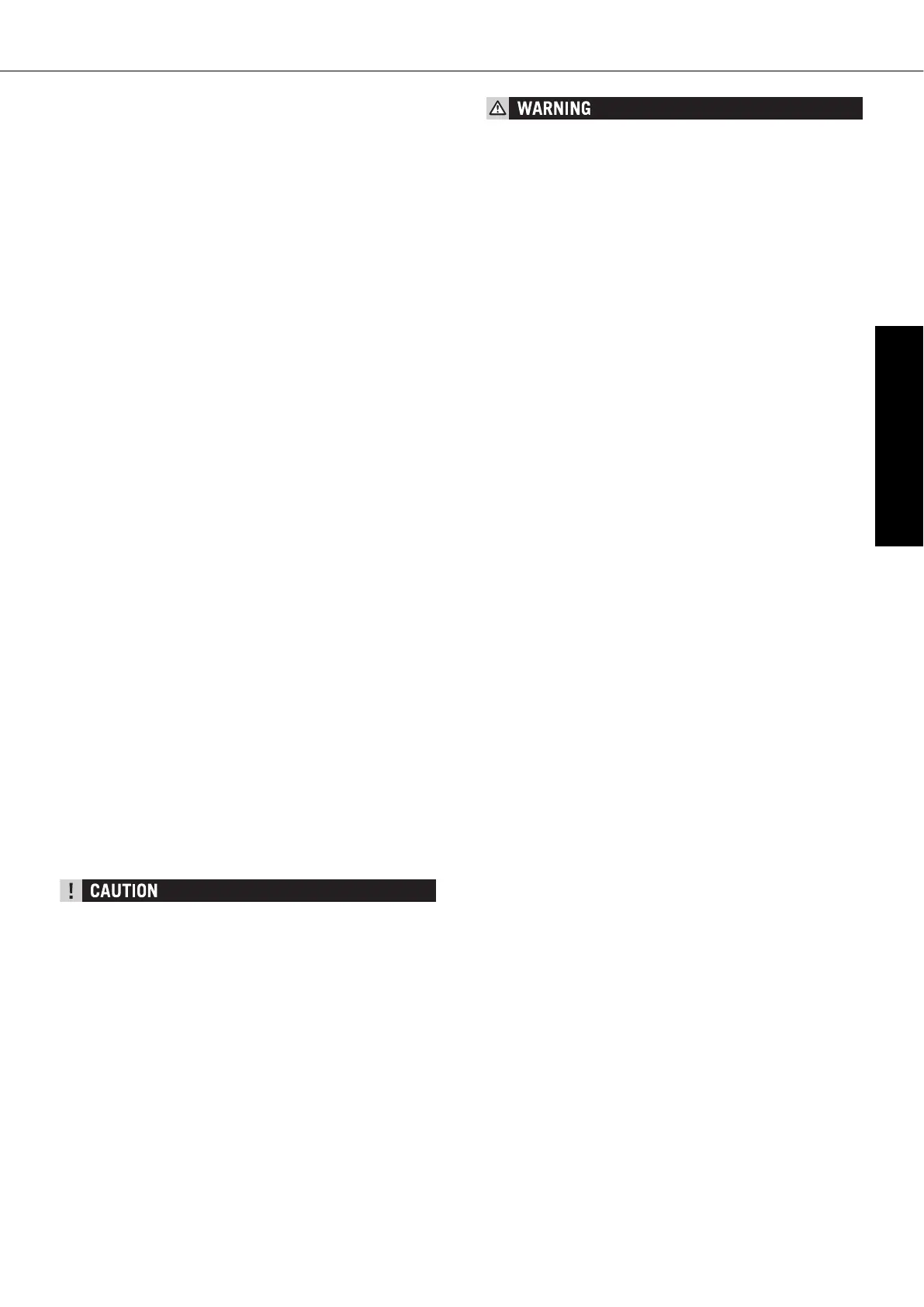 Loading...
Loading...
Do you have a question about the KTM 250 XC-F and is the answer not in the manual?
| Engine Type | Single Cylinder, 4-Stroke |
|---|---|
| Displacement | 249.9 cm³ |
| Bore x Stroke | 78 mm x 52.3 mm |
| Starter | Electric starter |
| Transmission | 6-speed |
| Cooling | Liquid cooled |
| Front Suspension | WP XACT-USD, Ø 48 mm |
| Rear Suspension | WP XACT Monoshock with linkage |
| Front Brake | Disc brake |
| Rear Brake | Disc brake |
| Seat Height | 950 mm |
| Ground Clearance | 370 mm |
| Frame | Central double-cradle type, 25CrMo4 steel |
| Fuel Tank Capacity | 8.5 liters |
Defines the intended use and limitations of KTM sports motorcycles for off-road competition.
Emphasizes the importance of proper maintenance for faultless operation and avoiding premature wear.
Details warranty conditions, emphasizing adherence to service schedules and authorized dealer work.
Introduces the electronic speedometer and its basic operation with buttons.
Guides on how to access the setup menu and activate/deactivate display modes.
Provides instructions on how to set the digital clock on the speedometer.
Explains how to adjust the fork's compression damping using external screws.
Describes how to adjust the fork's rebound damping using the REB screw.
Details adjusting low and high-speed compression damping on the rear shock.
Explains adjusting compression damping on XC-W/EXC shock absorbers.
Describes adjusting rebound damping on XC-W/EXC shock absorbers.
Guides on adjusting fork spring preload using the adjuster screw.
Explains adjusting XC-W/EXC fork spring preload using spacers.
Describes how to check for play and adjust the steering head bearings.
Explains how to change fork offset (18 or 20mm) for handling optimization.
Explains how to check the chain tension by measuring slack.
Guides on adjusting chain tension and aligning the rear wheel.
Provides step-by-step instructions for removing and installing the front wheel.
Details the process for removing and installing the rear wheel.
Explains the function of the cooling system and its components.
Provides instructions on how to clean the air filter and filter box.
Guides on adjusting engine idling speed and mixture control screw.
Guides on checking the engine oil level, whether the engine is cold or warm.
Provides instructions for changing the engine oil, including cleaning screens.
Details the procedure for changing engine oil filters.
Details the engine break-in procedure for new XC/EXC models, including RPM limits.
Lists essential pre-ride checks for safety and optimal motorcycle condition.
Details braking techniques, including front/rear brake use and conditions.
Lists causes and remedies for an engine that won't crank using the electric starter.
Addresses issues when the engine cranks but fails to start via electric starter.
Provides solutions for when the engine fails to start using the kickstarter.
Lists causes and remedies for an engine that does not idle correctly.
Addresses issues preventing the engine from reaching higher RPMs.
Explains why the engine might not deliver full power and how to fix it.
Details common causes for the engine stopping or sputtering.
Lists reasons for engine overheating and potential solutions.
Provides detailed technical specifications for the engine, including dimensions and components.
Lists carburetor settings such as main jet, needle, and air jets for various models.
Details chassis specifications like frame, suspension, brakes, and dimensions.
